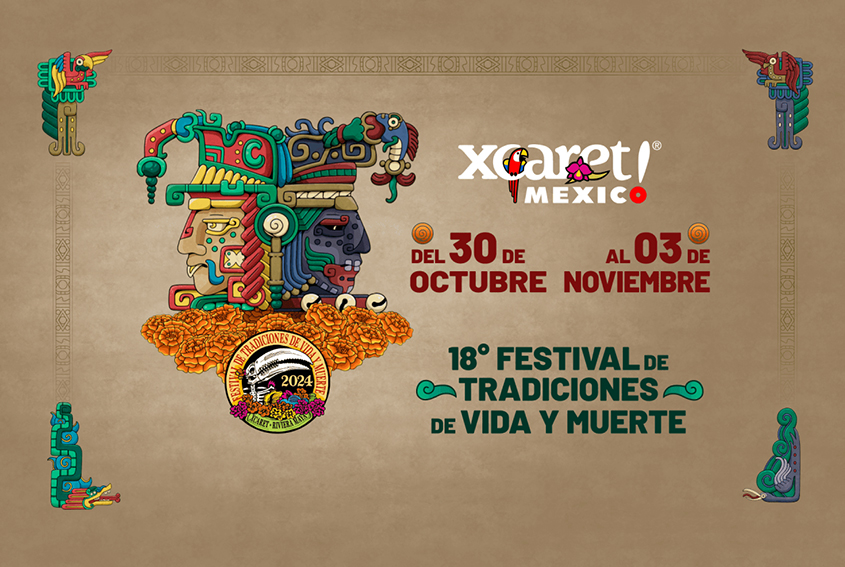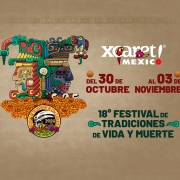
Towards the end of October, you’ll begin to see cempasuchitl marigolds, red cockscomb flowers and fragrant lilies, pan de muerto, candy skulls and cut tissue paper as people begin to build Dia de Muertos altars in honor of the departed.
One of Mexico’s richest and most colorful traditions, Día de Muertos is observed on November 1 and 2. At this time of year, Mexicans believe that the dead come back to the world of the living for a short time. They welcome their loved ones with altars laden with flowers, food, treasured possessions, and other offerings, and with candlelit vigils, masses and serenades.
You’ll see Dia de Muertos altars built by our team members around the resorts and wherever you go in Cancun, Playa del Carmen and elsewhere in the Mexican Caribbean and Yucatan. Here are some highlights.
Xcaret Festival de Tradiciones de Vida y Muerte, October 30 to November 3
If you are interested in Mexican traditions, you won’t want to miss the Xcaret Festival de Tradiciones de Vida y Muerte, a celebration of timeless Day of the Dead customs. Dia de Muertos is on the UNESCO World Heritage list in the Intangible Culture category.
The program features processions, altars, traditional cuisine, art exhibits, music, dance, theater, children’s events and a visit to the colorful Mexican cemetery. Each year, one Mexican state is chosen as the guest state and this year it is the turn of Quintana Roo, which is celebrating 50 years of statehood. Thirty-six Maya communities from all over the state will be participating with altars, food stalls, crafts, music and more.
Hanal Pixan in Yucatan
In Yucatan, the Day of the Dead is known as Hanal Pixan or “feast of the souls” and altars spring up in Valladolid, Izamal and in the state capital Merida, where Dia de Muertos events include the huge Paseo de las Animas procession from the city cemetery.
Ask at the Thomas More Travel desk about Xcaret trips and the Festival de Tradiciones de Vida y Muerte festivaldevidaymuerte.com

